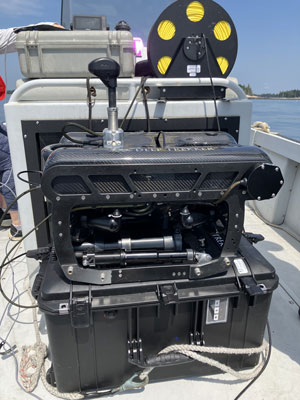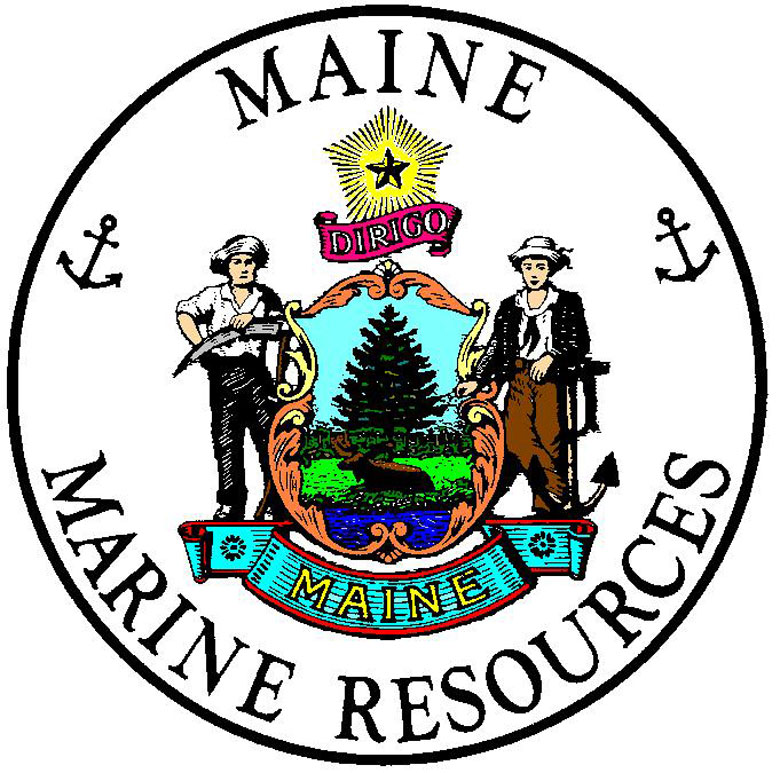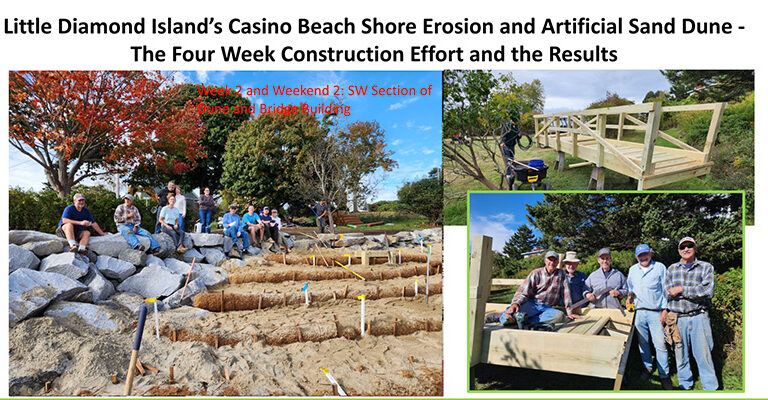With funding from the Maine Aquaculture Innovation Center, the Department of Marine Resources (DMR) aquaculture division has purchased a new remotely operated vehicle to replace an older model which has significantly streamlined the evaluation of aquaculture lease applications.
The department has received $51,024 from the Aquaculture Innovation Center to purchase the new remotely operated vehicle, or ROV. While the older ROV, a 2009 model acquired from a separate Marine Resources bureau in 2023, provided significant time savings for lease site evaluations, it was beginning to fail and needed to be replaced.
DMR is required by law to conduct site visits for all proposed standard and experimental leases. As part of the site assessment, it must obtain or verify information related to the general characteristics of the area including flora and fauna, bottom composition, and water depths.
Before 2023, department scientists would complete most underwater assessments by diving with scuba equipment and using recording devices such as GoPro cameras—a relatively time consuming and labor-intensive process.

In 2023, DMR began to explore ways to improve efficiency of site visits. “Efficiency is critical because of the increased interest in Maine’s aquaculture sector,” said Amanda Ellis, director of DMR’s aquaculture division. “The number of lease application submissions has increased significantly over the past several years. It can take up to three years, from the date a proposal was deemed complete, to issue a final decision on the application. These timeframes are very challenging for industry.”
DMR’s lead aquaculture scientist, Meryl Grady, recognized that using a ROV could provide time savings without compromising the quality of site assessments. DMR immediately started testing that theory using a 2009 model ROV previously used by the department’s science bureau. The technology proved valuable, greatly enhancing the ability to conduct site visits.
Use of the ROV nearly tripled the number of site visits DMR could complete in a year. In 2022, before deploying the ROV, it completed 20 site visits, while in 2023 and 2024, with the ROV, the department completed 52 site visits each year.
Site assessments using the ROV require fewer staff which frees up personnel to work on other required tasks like writing site reports. DMR estimates that the ROV has saved the aquaculture division approximately 600 hours of staff time. Since ROVs are also capable of collecting data, the new unit will also improve DMR’s report-writing process.
“The data collected is easily integrated into written reports, reducing the overall time staff spend drafting and refining them, allowing them to focus on other critical tasks,” said Ellis.
With the older ROV beginning to fail, in winter 2025 the department turned to the Maine Aquaculture Innovation Center’s grants program for support. The proposal to purchase a Deep Trekker Pivot ROV was funded and the new device arrived in June.
“The new ROV includes many features that not only save time and resources but also provide the potential for improvements to information and data gathering on lease sites,” said Ellis.
“This new ROV represents our commitment to fostering innovation in Maine’s aquaculture sector, ensuring that our industry can grow sustainably,” said Anne Langston Noll, executive director of the Maine Aquaculture Innovation Center.





